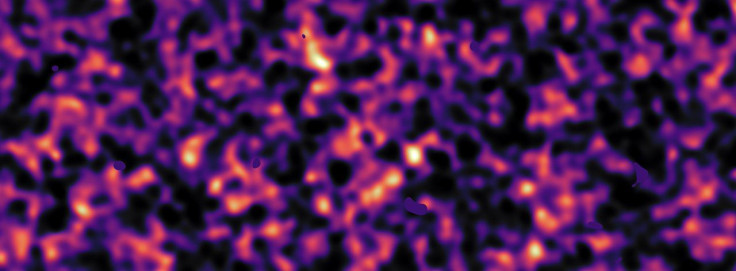Dark Matter May Be Lot Less ‘Clumpy’ Than Previously Thought, New Survey Reveals

Dark matter — the mysterious substance that makes up 85 percent of the universe’s mass — may be more evenly distributed in the cosmos than previously believed, according to a new analysis of its gravitational effects on light from 15 million galaxies.
The belief that the distribution of dark matter throughout the cosmos is uneven is based on observations made using the European Space Agency’s Planck satellite, which used gravitational lensing to create a map of dark matter.
Gravitational lensing — a phenomenon predicted by Einstein’s theory of general relativity — refers to the bending of light by the gravity of massive objects. Since dark matter exerts a gravitational pull on the fabric of space-time, one can look for this lensing effect to get a picture of its distribution.
Based on the data gathered by the Planck satellite, scientists created a theoretical model of how the universe should appear today — given that regions rich in dark matter would also have more luminous matter.
However, the new observations — made using the European Southern Observatory’s VLT Survey Telescope in Chile and the Kilo-Degree Survey — contradict the predictions made using this model.
For their analysis, the researchers used images from the survey that covered five patches of the sky covering a total area of roughly 2,200 times the size of our full moon — a region that contained approximately 15 million galaxies. When they used this data to calculate gravitational lensing caused by large-scale structures, they discovered that the distribution of dark matter was significantly different from the value derived using Planck data.
“This latest result indicates that dark matter in the cosmic web, which accounts for about one-quarter of the content of the Universe, is less clumpy than we previously believed,” Massimo Viola, an astronomer from the Leiden Observatory in the Netherlands, who co-authored a study detailing the observations, said in a statement.
Cosmic web, as the name suggests, is a gigantic web formed by the galaxies in the universe and the interstellar material that links them together.
“We see an intriguing discrepancy with Planck cosmology at the moment. Future missions such as the Euclid satellite and the Large Synoptic Survey Telescope will allow us to repeat these measurements and better understand what the Universe is really telling us,” co-author Konrad Kuijken, also from the Leiden Observatory, said in the statement.
© Copyright IBTimes 2024. All rights reserved.






















